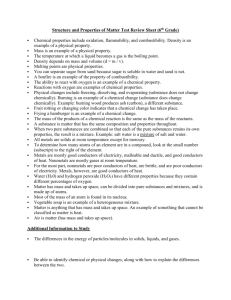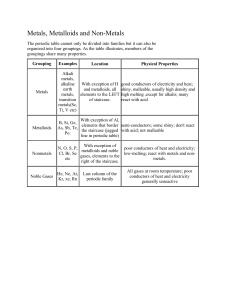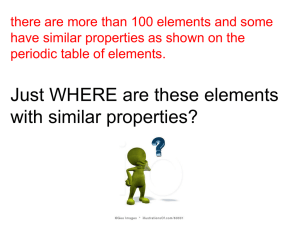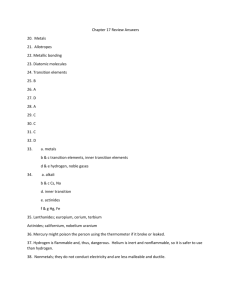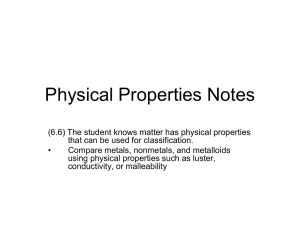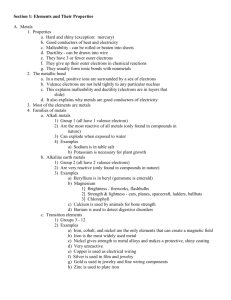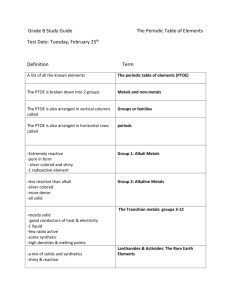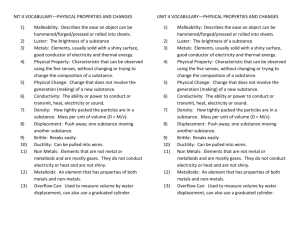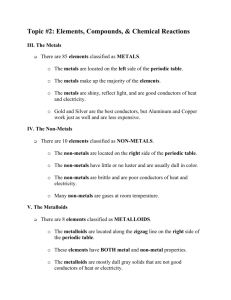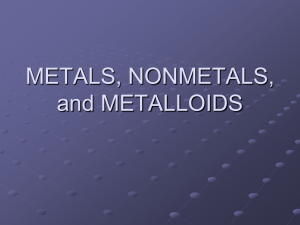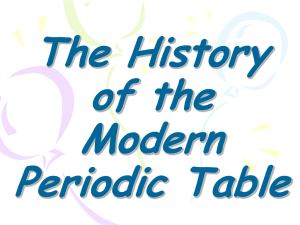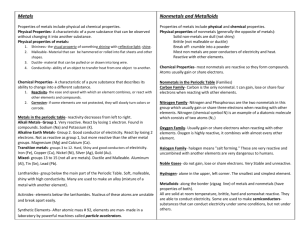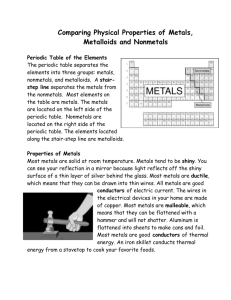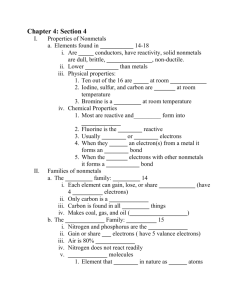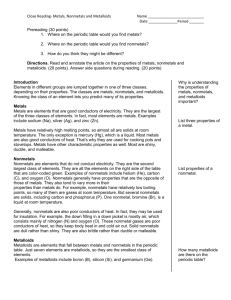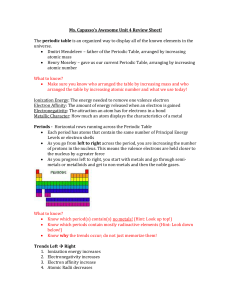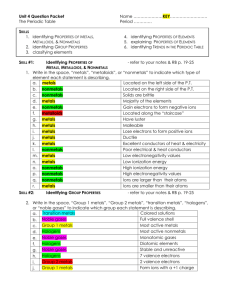Properties of Metals, Nonmetals, metalloids
advertisement
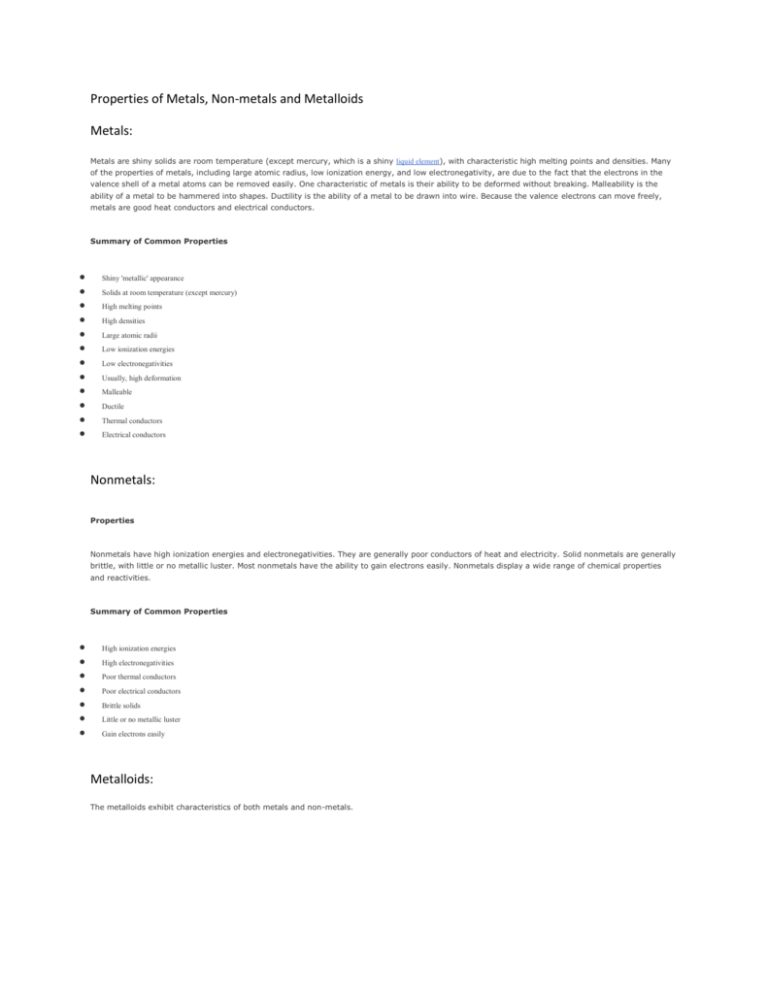
Properties of Metals, Non-metals and Metalloids Metals: Metals are shiny solids are room temperature (except mercury, which is a shiny liquid element), with characteristic high melting points and densities. Many of the properties of metals, including large atomic radius, low ionization energy, and low electronegativity, are due to the fact that the electrons in the valence shell of a metal atoms can be removed easily. One characteristic of metals is their ability to be deformed without breaking. Malleability is the ability of a metal to be hammered into shapes. Ductility is the ability of a metal to be drawn into wire. Because the valence electrons can move freely, metals are good heat conductors and electrical conductors. Summary of Common Properties Shiny 'metallic' appearance Solids at room temperature (except mercury) High melting points High densities Large atomic radii Low ionization energies Low electronegativities Usually, high deformation Malleable Ductile Thermal conductors Electrical conductors Nonmetals: Properties Nonmetals have high ionization energies and electronegativities. They are generally poor conductors of heat and electricity. Solid nonmetals are generally brittle, with little or no metallic luster. Most nonmetals have the ability to gain electrons easily. Nonmetals display a wide range of chemical properties and reactivities. Summary of Common Properties High ionization energies High electronegativities Poor thermal conductors Poor electrical conductors Brittle solids Little or no metallic luster Gain electrons easily Metalloids: The metalloids exhibit characteristics of both metals and non-metals.
